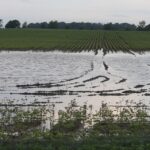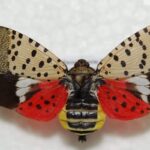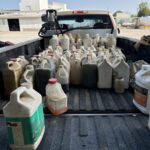Fruit rots: Late season fruit rots, including sour rot complex, botrytis and ripe rot, are major concerns in the Midwest (Figure 1). Rains this time of the year can lead to disaster. If berries split due to rain, yeasts and bacteria can quickly invade damaged fruit, which can lead to rots that attract fruit flies.[Read More…]
Written by: Devyn Raver, August 4, 2025 The Ag Climate Dashboard offers tools to help monitor extreme weather events in addition to crop growth, pest threats and climate anomalies. (Agricultural Communications) WEST LAFAYETTE, Ind. — The Midwestern Regional Climate Center (MRCC), with support from the United Soybean Board, has launched the Ag Climate Dashboard — a centralized digital hub[Read More…]
The spotted lanternfly (Lycorma delicatula) was first identified in Indiana in July 2021 in Switzerland County. Since then, populations have spreading rapidly across the state (Figure 1). This is the time of the year that the insects are in their most recognizable adult state (Figure 2). Early detection is crucial to stop the spread. [Read More…]
The University of Kentucky Center for Crop Diversification (UK CCD) and the Organic Association of Kentucky (OAK) are hosting the Mechanical Weed Control Field Day in partnership with Glacial Drift Enterprises at the University of Kentucky Horticulture Research Farm in Lexington, KY on September 23rd. Tickets are $55 and include lunch. For more information and[Read More…]
Participate in the 2025 Office of the Indiana State Chemist (OISC) Pesticide Clean Sweep Project, which is designed to collect and dispose of suspended, canceled, banned, usable, opened, unopened or just unwanted pesticides (herbicides, insecticides, rodenticides, fungicides, miticides, etc.). This is a great opportunity to legally dispose of unwanted products for free (up to 250[Read More…]
Calling all Midwest Farmers! You are invited to share your farming story and practices. We are conducting interviews as part of the IMPACT²: Social-Ecological Memory in Midwest Agriculture project, a PhD research study at Purdue University. This work explores how memories of past extreme weather events (floods, droughts, storms) influence today’s farming decisions. We are looking[Read More…]








